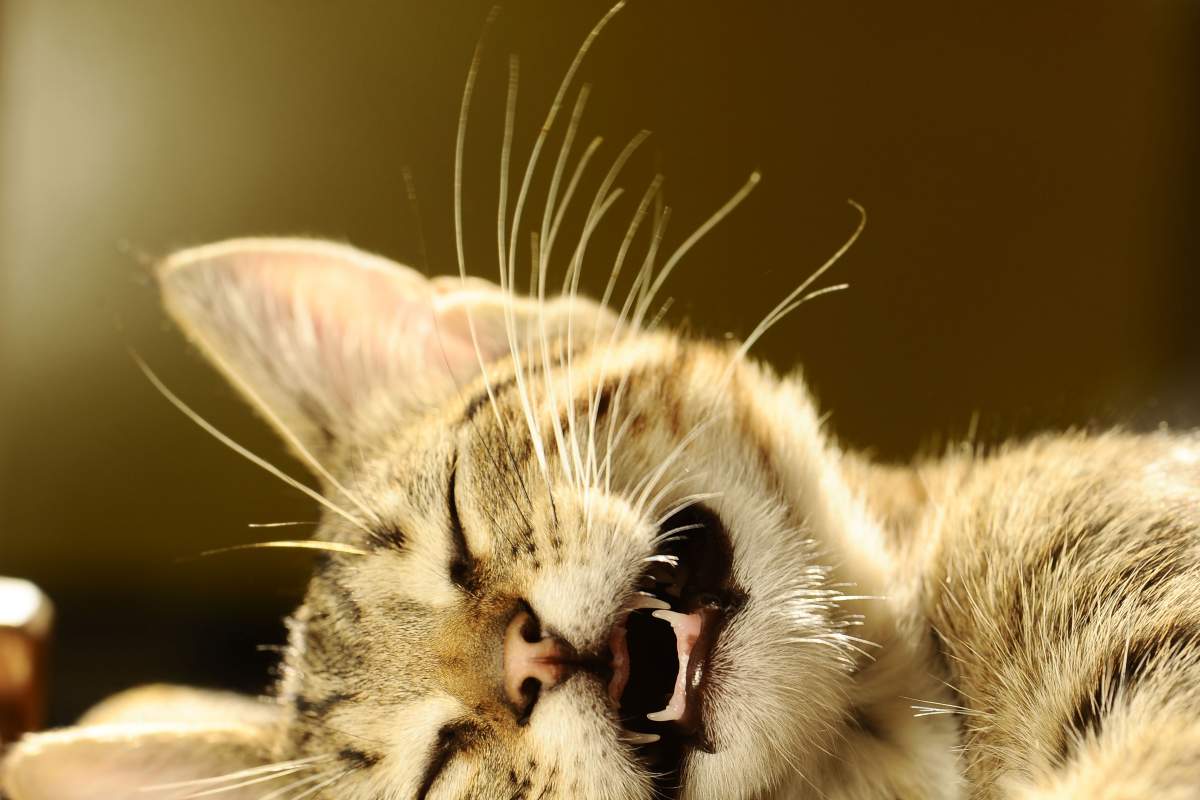
Dear A Moment of Science, I'm a cat lover, and I've often wondered: Why do cats have whiskers? I assume it helps them sense their environment but how, exactly?
The answer might seem obvious, but cat whiskers are more complex than you may think. Cats have whiskers not only under the nose but also above the eyes and on the ears and forelegs.
Cat whiskers help cats see in the dark. A whisker is basically a long, stiff hair, at the root of which is a nerve‑loaded follicle. When cats brush these sensitive hairs against an object in the dark, they can very accurately sense its location, size, and texture. Whiskers can even sense changing air currents, helping cats avoid potential dangers.
Whiskers can also help communicate a cat's state of mind. If your feline's whiskers are pulled back against its face, chances are it's scared or wary. But if the whiskers are relaxed and pointing away from the face, your cat is most likely in a laid-back mood.
Cats are not the only animals with whiskers, of course. Many mammals have them. Scientists think they evolved as a way to help the earliest mammals hunt at night, when the dinosaurs they shared the world with were less likely to be on the prowl.









